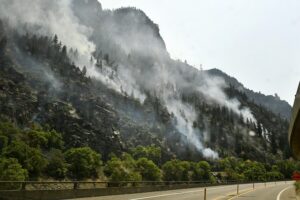
From Nature – When an extreme storm, known as a bomb cyclone, blasted California and the Pacific Northwest in October 2021, it broke single-day rainfall records for several regions that didn’t burn and caused flash flooding, but didn’t set off any significant mudslides in the burnt areas. “It is not about the storm total rainfall, but the intensity of the rain,” says Nina Oakley, a research meteorologist at the Scripps Institute of Oceanography in San Diego,California, who studies the connection between extreme rainfall events and landslides. “That’s why you really need 15-minute rainfall information to forecast post-fire debris flows.” Mudslides and similar types of slope failure can cause tremendous damage. In the United States, rough estimates put the direct economic costs of landslides in the range of several billion dollars each year, says Jonathan Godt, the coordinator of the Landslide Hazards Program at the USGS. But the indirect costs, which include losses in commerce and related factors, are probably several times that estimate, Godt says. In January 2021, Congress passed the National Landslide Preparedness Act, which authorized US$37 million annually from 2021 to 2024 for federal agencies to broaden their efforts to reduce the hazards from landslides. One goal of the bill is to expand existing early-warning systems for post-wildfire burnt landscapes in the United States. (more)

